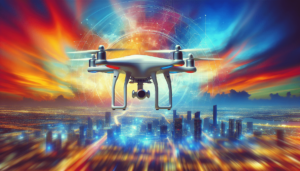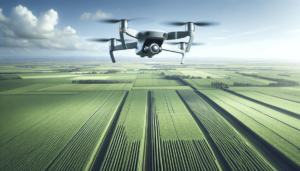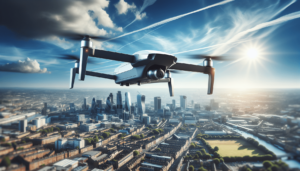Has the age of delivery drones inched closer to becoming our everyday norm? A question that might seem curious or perhaps even futuristic at first glance is rapidly transforming into a genuine possibility. The idea of receiving packages not by the traditional means of a delivery truck but rather from the sky courtesy of an autonomous flying vehicle is no longer confined to the pages of science fiction. In fact, it seems increasingly plausible that delivery drones could soon become a regular part of our urban and rural landscapes.
With this fascinating development in mind, let’s unravel the current status of delivery drones, the challenges they face, and the transformative implications they hold for society.
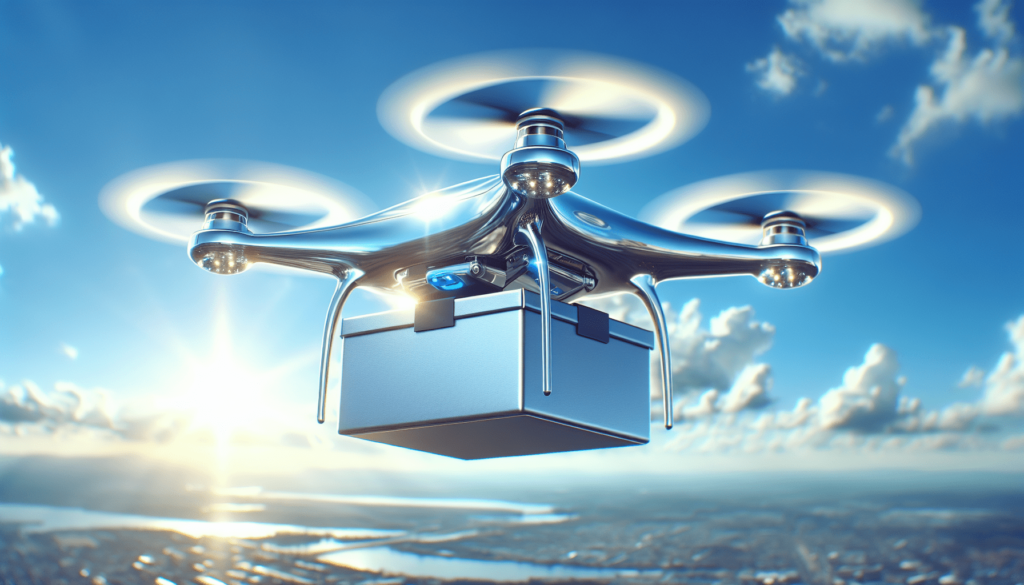
The Evolution of Delivery Drones
A Brief History
Delivery drones, or unmanned aerial vehicles (UAVs), have their roots deeply embedded in military applications. Initially designed for reconnaissance, these devices have evolved significantly over the decades. Their potential to revolutionize the commercial sector was first considered seriously around the year 2010. Visionaries foresaw a future where drones could zip through the air delivering goods, reducing delivery times from hours to mere minutes.
The Advent of Commercial Interest
Commercial interest in drone delivery began to gain momentum when companies like Amazon announced their plans to create drone-based delivery systems. The public’s imagination was captured, and the race to develop efficient delivery drones was on. This was not just a technological race but a contest where regulatory, safety, and logistical challenges had to be met.
Current Technological Capabilities
Today’s delivery drones are equipped with advanced navigation systems, GPS tracking, and collision-avoidance technologies. Many of them can carry packages weighing several pounds and cover distances of up to 10 miles. The advancements in battery life and material strength mean they are more reliable than ever before. These developments have been crucial in transitioning delivery drones from prototypes to functional delivery mechanisms.
The Benefits of Delivery Drones
Efficiency and Speed
One of the most alluring aspects of drone delivery is the promise of speed. With drones, the entire delivery process can be faster than current conventional methods, sometimes delivering packages within half an hour after an order has been placed. This efficiency is especially beneficial for urgent deliveries such as medical supplies.
Environmental Impact
Drones have the potential to significantly reduce the carbon footprint associated with package delivery. By diminishing the reliance on fuel-dependent delivery trucks, there is a substantial decrease in emissions. Drones, powered by electricity, present a cleaner and more sustainable alternative to traditional logistics.
Reduction in Traffic Congestion
Using drones for delivery services could lead to a noticeable reduction in road traffic congestion. With fewer delivery trucks on the roads, urban centers may enjoy smoother traffic flow. This could also lead to decreased wear and tear on infrastructure, thus saving on maintenance costs.
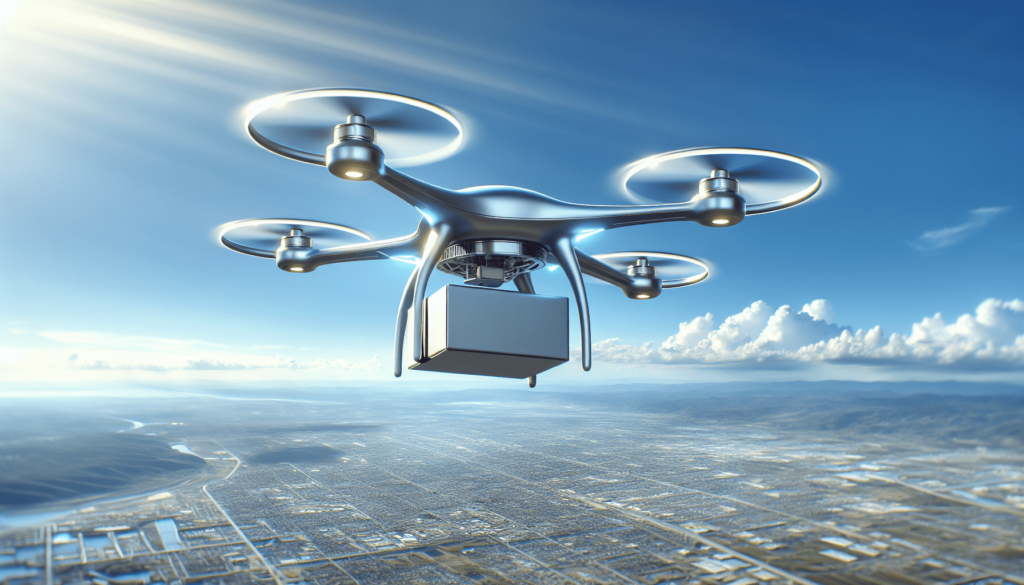
Challenges Facing Drone Delivery Implementation
Regulatory Hurdles
While technology makes drone delivery feasible, regulatory issues present a formidable barrier. The airspace management is complex, with a myriad of safety concerns including avoiding collisions with manned aircraft. Regulatory bodies like the Federal Aviation Administration (FAA) in the United States have been cautious, developing frameworks to safely integrate drones into domestic airspace.
Privacy Concerns
Drones equipped with cameras and sophisticated sensors raise legitimate privacy issues. People may have concerns about these flying devices capturing images or video in sensitive areas. Addressing these concerns is crucial in gaining public trust and acceptance.
Security Risks
The potential for drones to be used in unlawful activities is a genuine concern. There is a risk of drones being hacked or used to carry malicious payloads. Ensuring robust cybersecurity measures are in place is key to counteracting these threats.
The Global Perspective on Drone Deliveries
Developments in the United States
The United States has been a hotbed for drone innovation. Testing and pilot programs have been established in various locations. Companies such as Wing, a subsidiary of Alphabet, and UPS have initiated parcel deliveries, particularly in less densely populated areas where drone delivery appears most feasible.
Progress in Europe
European nations have also embraced drone delivery, although the regulatory landscape differs by country. The UK, for instance, has seen trials by Amazon and other companies aimed at refining the delivery models suited to urban settings.
Advancements in Asia
Asia, with its blend of densely populated urban centers and remote rural communities, presents an intriguing landscape for drone delivery. Chinese giants like Alibaba have actively explored using drones to overcome logistical challenges, especially in hard-to-reach areas.
The Future of Delivery Drones
Integration with Smart Cities
As cities become more interconnected and ‘smart,’ the integration of delivery drones could fit seamlessly into this infrastructure. Smart cities, with their advanced communication networks, can provide the real-time data necessary to support efficient drone operations.
Possibilities in Retail and E-commerce
The e-commerce industry stands to benefit tremendously from drone deliveries. With consumer expectations shifting towards quicker delivery times, drones could give retailers that much-needed edge in a competitive market.
Potential Impacts on Employment
The introduction of drones into the workforce raises questions about the future of traditional delivery jobs. While drones operate autonomously, there will be a need for skilled technicians, operators, and analysts to manage and maintain the drone fleets.
Societal Implications of Widespread Drone Usage
Shift in Consumer Behavior
The rapid fulfillment of orders could promote a culture of instant gratification. Customers might become more impulsive with their purchasing habits, leading to challenges related to consumption and waste management.
Urban Planning and Infrastructure
The buzzing presence of drones in the skyline could lead city planners to rethink urban design. Future cities might incorporate drone-specific features such as landing pads and air traffic systems, creating harmonious coexistence between terrestrial and aerial transport.
Ethical Considerations
The widespread use of drones brings up ethical questions about surveillance, data collection, and individual privacy. Ensuring ethical standards are maintained is critical to the responsible development of drone technology.
Embracement of AI and Machine Learning
The enhancement of drones through AI and machine learning will play a pivotal role in their evolution. These technologies are essential for navigating complex environments, predicting weather changes, and ensuring the safety of various operations.
Conclusion
So, how close are we to seeing delivery drones everywhere? The trajectory is clear; they are not just on the horizon—they are rapidly approaching our skies. With ongoing advancements, supportive regulatory frameworks, and evolving societal acceptance, delivery drones will likely become a prominent feature of our future. Their potential to reshape logistics, alter consumer habits, and redefine urban planning is immense. However, ensuring that this transition happens smoothly, ethically, and sustainably remains a task for innovators, regulators, and communities alike. Indeed, as we stand on the cusp of a delivery revolution, it is only a matter of time before drones transition from mere technological novelty to indispensable logistical tools.
